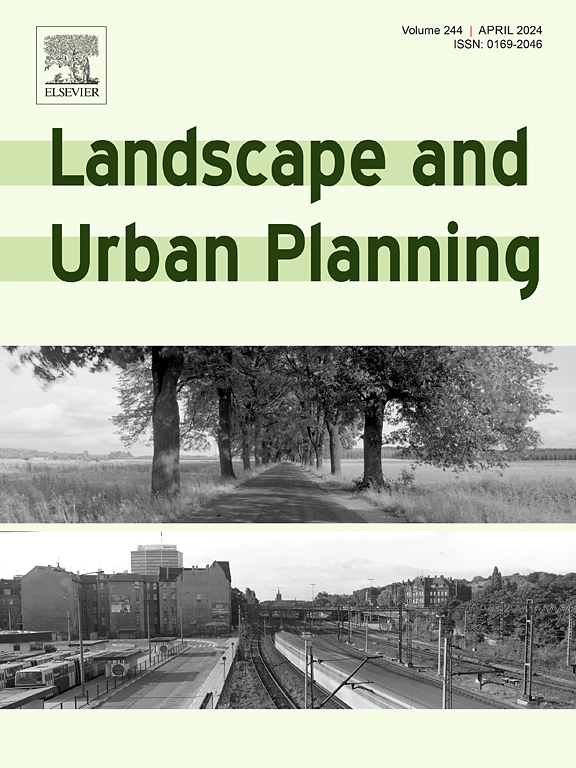城市扩张会减少绿地暴露吗?来自中国城市的证据
IF 9.2
1区 环境科学与生态学
Q1 ECOLOGY
引用次数: 0
摘要
保持普遍的绿色空间是建设宜居城市的关键任务之一。然而,在过去的几十年里,世界范围内城市扩张的盛行导致了绿色空间的不均匀暴露,作为无序城市发展的空间伴随物。以前的文献主要集中在研究生物物理条件、社会经济发展和制度能力对形成绿色空间暴露的影响,很少关注城市蔓延的作用。为了解决这一差距,我们开发了一个概念框架来探索城市扩张与绿色空间暴露之间的关系。然后,我们使用高德地图实时可达性模型、景观指标和回归模型来检验城市扩张是否会减少中国城市的绿地暴露。从统计数据上看,南部和东南部城市以及行政级别较高的城市绿地暴露程度较高,而东部和较小的城市则倾向于城市扩张。此外,我们还部分证实了城市扩张会减少绿地暴露,尤其是在分散和碎片化的中国城市。这一结果可归因于优先考虑城市核心而不是郊区的规划策略。然而,对于复杂的城市形态来说,情况并非如此。我们推测,这一发现与中国城市非系统增长和边缘发展的普遍特征有关。该研究可为规划人员和决策者在协调绿色空间规划与城市发展轨迹方面提供参考。本文章由计算机程序翻译,如有差异,请以英文原文为准。
Does urban sprawl lessen green space exposure? Evidence from Chinese cities
Maintaining universal exposure to green space is one of the crucial tasks in building livable cities. However, the prevalence of urban expansion in the past few decades worldwide has resulted in uneven exposure to green space as a spatial concomitant of disordered urban development. Previous literature has mainly focused on examining the impacts of biophysical conditions, socio-economic development, and institutional capacity in shaping green space exposure, with little attention given to the role of urban sprawl. To address the gap, we developed a conceptual framework to explore the relationships between urban sprawl and green space exposure. We then used Amap real-time accessibility model, landscape metrics, and regression models to examine whether urban sprawl can lessen green space exposure in Chinese cities. Statistically, it is clear that southern and southeastern cities, as well as those at higher administrative levels, have greater green space exposure, while eastern and smaller cities tend to exhibit urban sprawl. Furthermore, we partially confirmed that urban sprawl can lessen green space exposure, especially in dispersed and fragmented Chinese cities. This result can be attributed to planning strategies that prioritize city cores over suburban areas. However, this is not the case for complex urban forms. We speculate that this finding is linked to the universal characteristics of unsystematic growth and edge development in Chinese cities. This work may provide insights for planners and decision-makers in coordinating green space planning with urban development trajectories.
求助全文
通过发布文献求助,成功后即可免费获取论文全文。
去求助
来源期刊

Landscape and Urban Planning
环境科学-生态学
CiteScore
15.20
自引率
6.60%
发文量
232
审稿时长
6 months
期刊介绍:
Landscape and Urban Planning is an international journal that aims to enhance our understanding of landscapes and promote sustainable solutions for landscape change. The journal focuses on landscapes as complex social-ecological systems that encompass various spatial and temporal dimensions. These landscapes possess aesthetic, natural, and cultural qualities that are valued by individuals in different ways, leading to actions that alter the landscape. With increasing urbanization and the need for ecological and cultural sensitivity at various scales, a multidisciplinary approach is necessary to comprehend and align social and ecological values for landscape sustainability. The journal believes that combining landscape science with planning and design can yield positive outcomes for both people and nature.
 求助内容:
求助内容: 应助结果提醒方式:
应助结果提醒方式:


